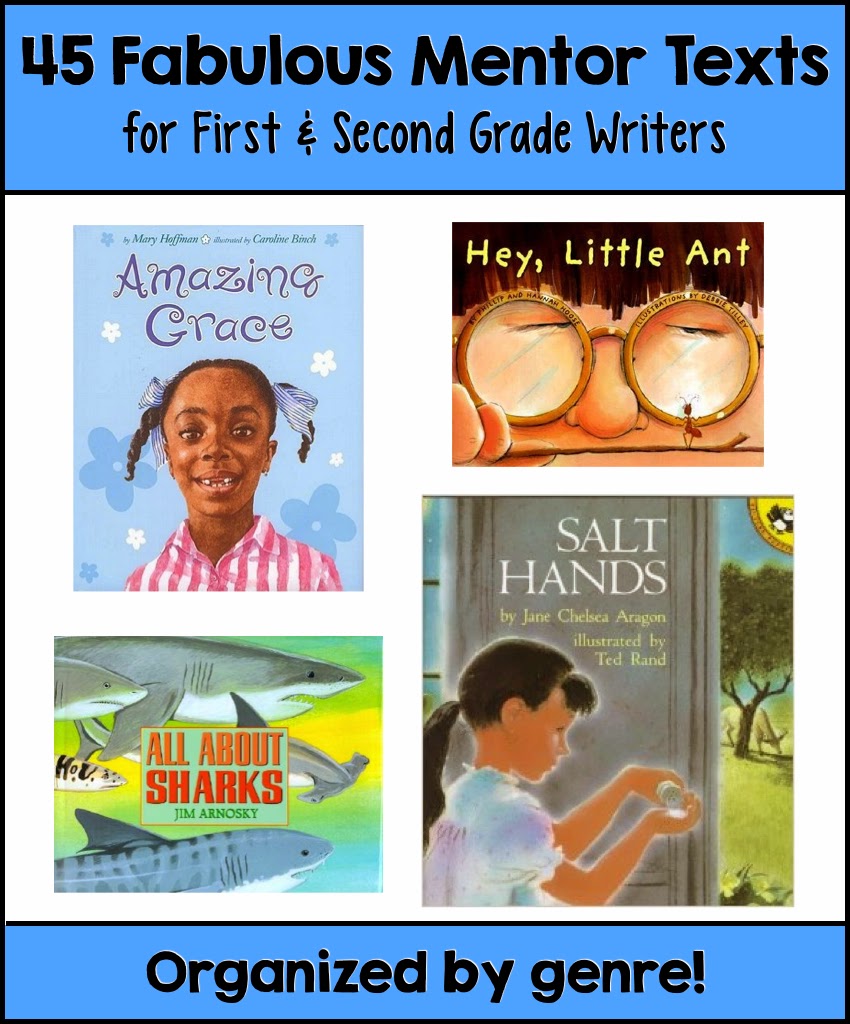
Ask students questions to comprehend the story. Since you want your students focused on the writer's craft, reading out loud will help struggling readers stay on task.ģ. Choose a mentor text that explicitly shows the particular skill you are teaching.Ģ. If we want students writing an exciting story or an effective essay, show them a mentor text.ġ.
MENTOR TEXTS FOR WRITING HOW TO
Next, find tips on how to use these strategies and look at some examples. "Teachers who repeatedly model and think aloud as they read and write explicitly show their students the mental strategies involved in constructing meaning."- TEA Reluctant writers will learn to trust the writing process by watching their teacher write examples of the lesson and/or apply it to a class story. Modeled writing should occur to provide another quality example for the students and establish good writing behavior in the classroom. Modeling is a way teachers show students how to apply a particular writing skill or craft by actively wrting their own example in front of the students. Looking at key skills featured in a published text is a powerful way to impact student writing.
MENTOR TEXTS FOR WRITING PROFESSIONAL
Mentor text should be used in teaching a writing lesson because the examples of quality writing from a professional writer gives meaning to the lesson. You and your students will be energized and motivated as you savor richly constructed mentor texts and connect them to amazing writing opportunities." -Linda Hoyt

Enjoy it, mark it up, make it your friend.

"Mentor Texts is like having a literature expert and master teacher at your side all year long. Using both strategies will provide your students with two explicit examples.įirst, let's look at the definitions of mentor text and modeling and why we should use them.Ī mentor text is a published piece of writing used when teaching a specific writing skill or craft to ultimately motivate students to write effectively. Then use mentor text as well as modeling to show students how to apply the lesson in their own writing. Prior to using these strategies with a new writing lesson, provide students with an anchor chart explaining the meaning of that particular writing skill or writer's craft. That is why I chose to discuss them together. This activity enables students to focus on the overall structure of the texts they will write and models effective ways of stating claims, introducing evidence, and reasoning about evidence.MENTOR TEXT and MODELING are both effective strategies to use when showing students examples of a writer's craft. This is typically done as students review the writing assignment in depth on Day 4 (after an initial review on Day 1 to set a purpose for the investigation), before students begin to plan and draft their own arguments. In addition, these Mentor Texts demonstrate three important components of Counterargument: recognizing possible counterclaims, identifying counterevidence, and sharing reasoning that critiques, rebuts, or reconciles the challenging ideas and evidence so that writers can re-assert their arguments (as presented in their claim, evidence, and reasoning). Mentor Texts can be used to have students identify the components of a Counterargument (claim, evidence, reasoning, counterargument) and to explore the ways the author of the Mentor Text uses language to create a coherent argument. Mentor Texts are used to focus students on the components of an effective Counterargument by identifying how the author of the Mentor Text presents a claim, evidence, and reasoning in arguing for their interpretation of an issue and sources. This Mentor Text is has a similar audience, purpose, and structure, but leaves the intellectual work of constructing an argument about Reconstruction to students.

To support students' writing without providing an exact model of what they will write, the Mentor Text for this investigation is a letter to curators at the same museum about an exhibit that makes an argument for how to portray school desegregation in another part of the museum. This offers students an opportunity to review and consider the overall structure of the writing, but does not bias them toward any particular claim in their own writing.įor example, in the Reconstruction investigation, students prepare to write the National Museum of African American History and Culture about how to portray the story of Reconstruction (as mostly as success or mostly a failure) within their exhibit on Slavery and Freedom. The example in each investigation is a model of the type of writing the investigation calls for, but the topic and focus are different from the investigation's topic and focus. Mentor Texts for each investigation offer students examples of disciplinary argument writing.


 0 kommentar(er)
0 kommentar(er)
